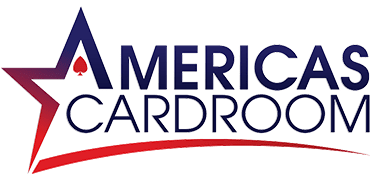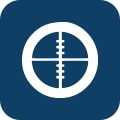To win regularly at poker, you need to play well at all stages of the hand. Let's understand what postflop is and why the level of play on the flop, turn, and river is so important for a successful career as a poker pro.
Postflop in poker begins when the dealer reveals the community cards. As soon as those first three community cards are face up on the felt (or screen), you’re in the postflop stage of the hand.
For the stage before postflop begins, players usually follow consistent strategies. When postflop poker begins, the new cards and growing pot can bring players into unknown territory.

What Is Postflop in Poker?
A poker hand can be divided into three stages:
1. Preflop: The players place mandatory bets (the small and big blind), and the dealer deals each player 2 cards face down. After this, the first betting round begins, opened by the player to the left of the big blind position. There are no community cards preflop, so the chance of winning is only influenced by your cards. That’s about to change.
2. Postflop: Now, there are streets or rounds – the flop, turn, and river. On the flop, the dealer reveals three community cards at once, on the turn – a fourth, and on the river – a fifth. Each street starts with a betting round, opened by either the small blind or the first active player clockwise from that position.
3. Showdown: The final stage of the hand, when opponents compare cards if bets don’t make everyone fold. At the dealer's command, opponents take turns revealing their hole cards, and the winner is determined by the strength of their hand.

Draws and Outs
When three community cards come on the flop, they can change the balance of power. However, they won't always give you or your opponent a strong made hand. Often players receive various draws (unmade hands) that have a good chance of winning.
This is where poker math comes into play. Even beginners can calculate their outs to win. Outs are cards that will strengthen your hand, turning it from unmade to a full-fledged hand.

For example, a gutshot (inside straight draw) implies only 4 outs, an open-ended straight draw – 8 (four cards on each side), and a flush draw on the flop gives 9 outs (13 suited cards minus the 4 already out).
You can calculate your outs anytime – for free. Try out our tool and get the percentages in seconds.
With experience, you'll understand that not every out will make your hand the best. But it's better to return to this after mastering poker basics.
Playing the Flop in Poker
Your further actions depend on the community cards the dealer opens. For example, three diamonds on the flop will scare even two black Aces, since the chances of winning are significantly reduced.
Flops can be divided into:
- Not coordinated (dry): This is a safe flop for the preflop aggressor. For example, for pocket Aces the flop K-7-2 would be dry. Your opponent will have difficulty connecting with it and making a stronger hand.

- Coordinated (wet): These flops often make hands challenging and creative. For example, a board with two or three cards of the same suit or connected values. Draw combinations are also possible, like a K-Q-5 board with two spades giving both flush and straight draws to hands like J9, JT, AT.

On the flop there is a new term to become familiar with – the continuation bet (c-bet). This is an active bet from the preflop aggressor. Many hands end this way, since without position it's difficult to resist an aggressive opponent – especially without hitting the flop. Depending on the stakes you play online, the circumstances of the continuation bet will change.






Playing the Turn and River in Poker
The turn and river are the next two streets. Giving general advice on how to play them is difficult, because the hands and cards can vary widely. The general recommendation is to have a game plan from the flop. Strategy in poker is a flexible concept; you must adjust your line depending on the cards that come out and your opponent's actions.
If you play each hand straightforwardly, even with strong hands, without considering board structure and opponent actions, you will lose much more often than necessary. You can study several interesting examples of river play in our other article.
How to Learn to Play Postflop?
Sometimes poker seems like the simplest game that can be understood in minutes. However, professionals spend months and years working on their game to win more and be more competitive at high stakes.
Here's how beginners can quickly improve, both postflop and preflop:
1. Find useful books and videos: The amount of information at your disposal is staggering. Whether you want to learn with books or videos on YouTube, there are plenty of options. Twitch is a more raw look at poker, but doesn’t let you consume strategy advice quickly.
2. Play freerolls: The best way to apply acquired knowledge is through practice. You can do this for free, building your bankroll without investment. The full schedule of free tournaments and current passwords are in a special section on GipsyTeam. Be sure to participate in GipsyTeam's free Freeroll League tournaments.
- Increased first deposit bonus
- Increased rakeback and reloads
- Help with deposits and cashouts
- Access to private freerolls
- Round-the-clock support




3. Discuss hands: Another effective way to improve is to constantly discuss hands. Beginners rarely have many poker friends, but this isn't a problem since you can start your own blog on a poker forum.
4. Work with software: The best poker software to improve your postflop game is Flopzilla. The program calculates and shows how often you'll hit the board with certain hands. It teaches you to understand the postflop game and think in ranges. With Flopzilla you can create your own charts of different hands. This is important for learning to analyze opponents' actions and make optimal decisions against them. The GipsyTeam store has poker software useful for players of all levels.
























